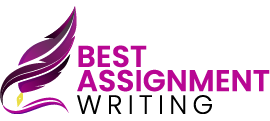
Avoiding Plagiarism in Academic Writing: A Comprehensive Guide
A Complete Guide On How To Avoid Plagiarism In Academic Writing
Finding relevant material and supporting proof to strengthen your argument can be difficult when writing academic papers. Incorporating relevant information and drawing on earlier established concepts and principles are essential steps, but they must be taken cautiously to avoid plagiarizing. It’s critical to be aware of the various kinds of copying to comprehend how to prevent it.
Plagiarism is the act of using another person’s words or thoughts without giving the original creator due credit. Plagiarism can occur unintentionally, through negligence or neglect, or it can happen when someone intentionally steals another person’s work. When writing an academic paper, you expand on the scholarship of others and draw knowledge and support from a variety of reliable sources. You must accurately cite these sources in your writing to prevent copying or you can also buy assignments online if you require help.
Why Is It Important To Prevent Plagiarism When Writing Academically?
Plagiarism can entice people for a variety of causes.
- When writing an academic paper, the author must offer their original theories and views that are supported by research, analysis, and critical thought. Plagiarism is a type of intellectual larceny that contravenes the ethical standards of study and learning. It attacks the basic values of academic ethics, honesty, and intellectual trustworthiness.
- Plagiarism may result in legal repercussions, including copyright violation, scholastic sanctions, and in some instances, lawsuits. It hinders the original writer from credit and thanks for their creative work.
- Plagiarism can harm a writer’s trustworthiness as a scholar or academic as well as their professional image. It may also have a detrimental impact on their chances for a future job.
- The quality, complexity, and uniqueness of a student’s thoughts and study are taken into consideration when academic organizations and teachers grade a student’s work. The precision and dependability of such evaluations are compromised by plagiarism.
Therefore, refraining from copying educational content is not only required but also crucial for upholding standards for academic evaluation, legal conformance, ethical concerns, and academic ethics.
The Most Popular Forms Of Plagiarism
The following are the kinds that are met most frequently in academic writing:
Direct Plagiarism
It refers to situations where a student plagiarizes a complete passage of text or omits to offer any sort of supporting documentation.
Plagiarism In Mosaic
Since it is also referred to as the enigmatic variety, this element is one of the most complicated. To avoid detection, such copying is frequently concealed and divided into several sections.
Self-Plagiarism
Self-plagiarism, for instance, is when you use specific passages from previous tasks when writing an academic paper. The best course of action in this situation is to consult with your academic adviser to determine how much knowledge you can glean from earlier works before moving forward with editing and proofreading services.
Mistaken Plagiarism
Even when copying is not intended, it is still illegal to omit quotation marks or provide incorrect source information.
Deliberately Misleading
To give their work more authority, students occasionally give incorrect information in their references. If one interacts with a study paper or a healthcare task, it is a severe crime that could result in a criminal offense.
Important Ways To Avoid Plagiarism In Academic Writings
Presenting the work of another person as one’s own is considered plagiarism. It is a dishonest and unlawful practice in academic writing that can have severe repercussions, such as dismissal, loss of academic reputation, and legal action. Therefore, students and academics must refrain from copying their written work. We’ll talk about some practical strategies for preventing copying in scholastic writing in this piece.
Cite & Reference Your Sources Correctly
Using correct references and referring is one of the best methods to prevent copying. This entails citing the information or concepts that you used in your work. There are numerous reference formats, including APA, MLA, and Chicago; it’s critical to use the one that best suits your field of study. Both in-text cites and the bibliography or list of references after your work are required for proper referencing.
Properly Paraphrasing
It is usual practice to paraphrase to prevent plagiarism, but it needs to be done properly. It is necessary to rephrase someone else’s thoughts or information in your terms to paraphrase; however, it is not sufficient to merely alter a few terms as well as sentence structures. Instead, you should use your own language and writing style to convey the substance of the original concept or information. Additionally, you need to correctly credit the initial source.
Use Plagiarism Detection Software
You can find any instances of copying in your work by using Turnitin plagiarism checkers free. To check for parallels, these tools match if you’re sending an email to a collection of previously published texts. Although many schools and institutions provide access to free plagiarism checker software, there are also a large number of internet alternatives, both free and purchased. It is crucial to remember that these instruments are not perfect and occasionally fail to detect instances of copying.
Make An Efficient Time Management Plan
In scholarly writing, time organization is essential. Rushing to finish a project can result in copying because there might not be sufficient opportunity to conduct adequate research and compose a quality paper. As a result, it’s critical to organize your thoughts and successfully use your time. This involves assigning dates to each job, dividing the project up into doable components, and setting aside time for research, writing, and revising.
Be Unique
Being unique is one of the most effective methods to prevent plagiarism. This entails coming up with your thoughts and viewpoints on a subject and conveying them in the way you write. While citing sources to back up your arguments is crucial, it’s also crucial to include your observations and analysis. This will additionally assist you in avoiding plagiarism but also improve the readability and provocativeness of your writing.
Ask For Advice & Assistance
Seek editing and proofreading services if you are uncertain of how to prevent plagiarism or if you have concerns about reference and referring. You can get advice on your writing from your professor or scholastic adviser as well as access to free plagiarism checker tools. Many colleges and institutions also provide writing classes or facilities that may assist you to hone your writing abilities and prevent copying.
In conclusion, refraining from plagiarism in academic writing is crucial for upholding trustworthiness and academic ethics. You can make sure that the content you produce is original, thoroughly studied, and free of theft by knowing what plagiarism is, using appropriate referencing and referring, copying properly, using Turnitin plagiarism checker free tools, managing the time you have effectively, being original, and getting editing and proofreading services.
Expert Advice From Us On How To Avoid Plagiarism In Academic Writing
Writing abilities are necessary to prevent copying. Below you will find a few writing guidelines to get you started on the right foot, even though comprehensive guidance on writing techniques is outside the purview of this lesson.
- Acquire the knowledge required to effectively convey your thoughts through your own words by learning the fundamentals of excellent writing. Unintentional plagiarism is frequently the outcome of poor writing abilities.
- Acquire the ability to interpret a source in your terms. Put something you have read away, write it in your terms, compare it to what you have already read in the original text, and edit your writing. Be careful to reference the source.
- Acquire appropriate citation skills. Select a reference format appropriate for your field (such as APA, MLA, or Chicago) and become thoroughly acquainted with it. In publications that are dedicated to your field of study, you might also discover instances of reference formats.
- Gain an understanding of what copying is and is not. Discover how to spot it. Identify any words or sentences in what you have composed that seem to be comparable to those in the original text after you have summarized it. Such terms or sentences can be highlighted in your pieces of writing so that you can determine whether to put them in quotation marks or rephrase them using your own words.
- Don’t take what you know for granted; it might not be “common knowledge” for everyone. You might have to reference some information you consider to be “common knowledge.”
- Never twist or change what was written in an origin to fit your requirements. This holds not only for writing but also for diagrams, photos, audio, and videos.
- To avoid repeating someone else’s misunderstanding, double-check any quotations you use from secondary sources to make sure they exist. You should also find out what was said in the referenced sources.
- Ask writers for approval before using significant passages of their writing, and offer them proper recognition in your writing.
- Use the assistance offered by the university’s writing center, internet tools, and, of course, the program teacher.
- When in question, enclose the text in quotation marks and supply sources
You Can Buy Assignments Online From Our Writing Services
If you are unsure of how to properly cite sources, you can purchase non-plagiarized assignments from the internet Bestassignmentwriting.co.uk. These writings are assured to be free of plagiarism. You’ll have a decent idea of how to write your paper in an efficient manner that can assist you to make the mark and remain on the right end of the academic integrity equation once you see how a professional would handle a paper to ensure that it addresses the task and remains free from copying.
You’ll be on the correct and excellent road to averting the most apparent copying mistakes so your paper can truly flourish by putting these tips and tactics into practice.

